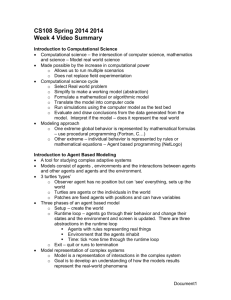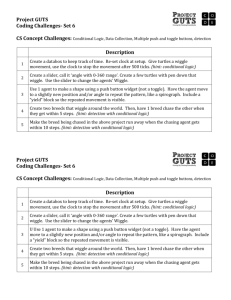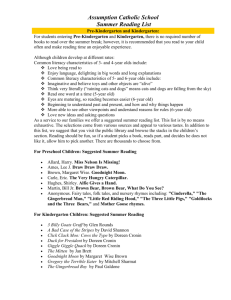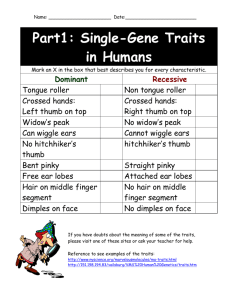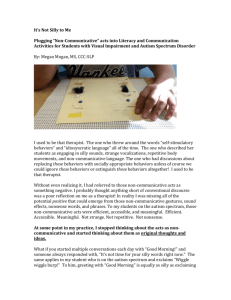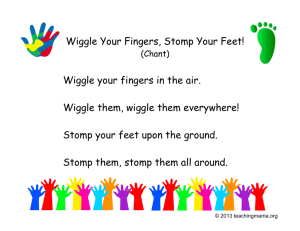Title of Lesson #1: Wiggling with Wiggle by Doreen
advertisement
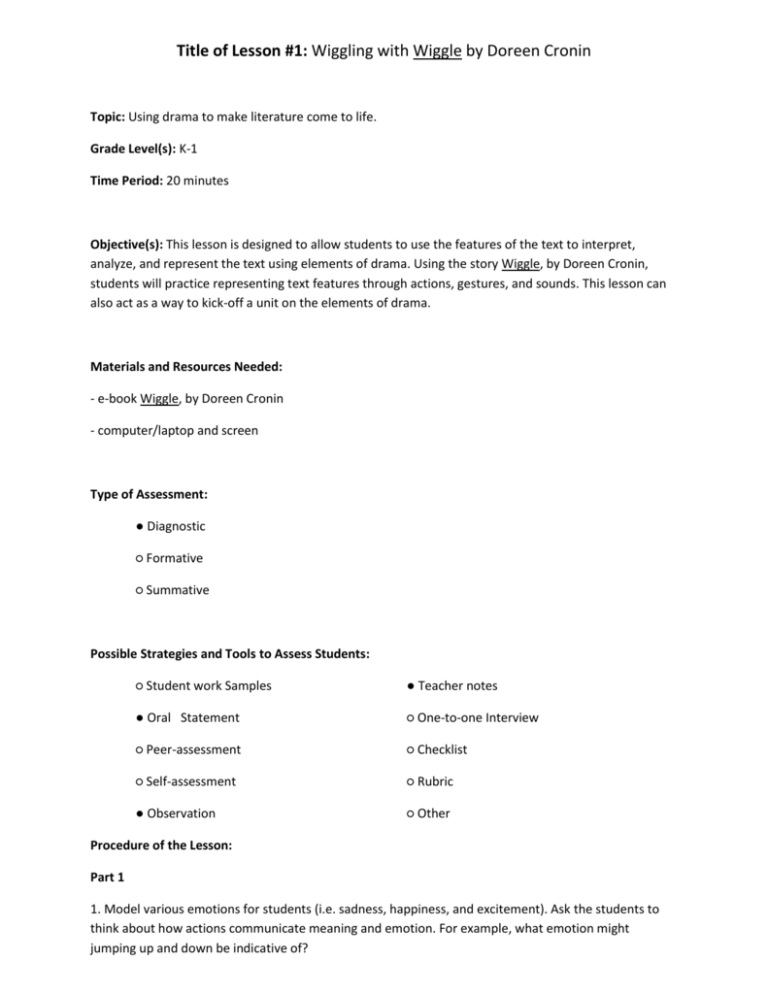
Title of Lesson #1: Wiggling with Wiggle by Doreen Cronin Topic: Using drama to make literature come to life. Grade Level(s): K-1 Time Period: 20 minutes Objective(s): This lesson is designed to allow students to use the features of the text to interpret, analyze, and represent the text using elements of drama. Using the story Wiggle, by Doreen Cronin, students will practice representing text features through actions, gestures, and sounds. This lesson can also act as a way to kick-off a unit on the elements of drama. Materials and Resources Needed: - e-book Wiggle, by Doreen Cronin - computer/laptop and screen Type of Assessment: ● Diagnostic ○ Formative ○ Summative Possible Strategies and Tools to Assess Students: ○ Student work Samples ● Teacher notes ● Oral Statement ○ One-to-one Interview ○ Peer-assessment ○ Checklist ○ Self-assessment ○ Rubric ● Observation ○ Other Procedure of the Lesson: Part 1 1. Model various emotions for students (i.e. sadness, happiness, and excitement). Ask the students to think about how actions communicate meaning and emotion. For example, what emotion might jumping up and down be indicative of? 2. Ask the students to turn to the student sitting next to them and to share their ideas. 3. After a few moments, ask the students to come back to the large group. Ask for volunteers to share their ideas. 4. Share the objective of the lesson with the students. Tell the students that together you will read the story Wiggle by Doreen Cronin and represent the actions that happen in the story to better understand the text. Part 2 1. Play the e-book Wiggle by Doreen Cronin once without stopping. Tell the students to pay close attention to the types of actions that occur throughout the book. 2. Play the e-book again. Stand up. Where the word “wiggle” appears demonstrate for the students the type of wiggling that occurs. 3. After demonstrating a few times, ask the students to join in. Part 3 1. Tell the students that you are going the play the e-book again once through and that they are to wiggle wherever they hear the word “wiggle” according to how the word “wiggle” is used. Closure: 1. Have the students to sit in a circle. 2. Create a sentence starter such as “When I think of wiggle I think of…” 3. Go around the circle and have the students complete the sentence starter. Title of Lesson #2: Re-Writing Wiggle Topic: Using the form of a text to write a story. Time Period: 35-40 minutes Grade Level(s): K-2 Objective(s): This lesson is designed to have students use the form in the e-book Wiggle by Doreen Cronin to re-write a portion of the story, using a different action word. This lesson can be used to also introduce students to various action words and have them use these words in different contexts. Materials and Resources Needed: - e-book Wiggle by Doreen Cronin - laptop/computer and screen - Wiggle Activity Sheet (one per student) - Enlarged version of the Wiggle Activity Sheet - pencil - eraser - colouring pencils Type of Assessment: ○ Diagnostic ○ Formative ○ Summative Possible Strategies and Tools to Assess Students: ● Student work Samples ● Teacher notes ● Oral Statement ○ One-to-one Interview ○ Peer-assessment ○ Checklist ○ Self-assessment ○ Rubric ● Observation ○ Other Procedure of the Lesson: Part 1 1. Play the e-book Wiggle by Doreen Cronin. Ask the students to pay close attention to how the word “wiggle” is used. 2. When the e-book has finished playing, ask the students to take a moment to think about how the word “wiggle” was used. You may want to ask the students the following prompt questions: What kind of a word is wiggle? What does it mean? What is another action word that could be used in its place? 3. Ask the students to think to themselves a word that could be substituted for the word “wiggle”. 4. Ask the students to turn to the student sitting next to them to share their ideas of a word that can be used in the place of “wiggle”. Give the students a few moments to share their ideas in their pairs. 5. Ask the students to come back to the large group. Ask for volunteers to share their ideas. Record the words that students suggest on chart paper. 6. Share with students the objective of this lesson. Tell the students that they will be using the same form used by Doreen Cronin in Wiggle to write their own story. Part 2 1. Select an action word from the list you have made with the students. For example, leap, jump, smile, etc. 2. Model for the students a re-write of the story using the enlarged version of the Wiggle Activity Sheet. 3. Once you have modeled for the students, ask for questions. Part 3 1. Give the students a copy of the story with blanks where the action word they have chosen goes. 2. Have the students write the action word they have chosen as their title. Model this for the students on the enlarged version of the Wiggle Activity Sheet. 3. Work through the first couple prompts with the students, ensuring that they are writing their word where it goes. 4. When students have completed writing their word into the slots, have them draw a picture in each quadrant. *Optional: You may also want the students to create a dramatization of their story. They could work in pairs whereby one student reads the story and another acts out the words. Closure: 1. When all students have finished. Ask the students to sit with a partner. 2. Have them read their story to their partner. 3. Ask the students to come back to the larger group. Ask for volunteers to share their stories. _______________________ (Title of story) By: ________________________ Do you wake up with a ____________? Do you _________ out of bed? If you ____________ with your breakfast, First ___________ where your tail Can you ____________ with your shadow? would be. Feeling extra silly? it might wind up on your head. Can you ________________ in the water? ____________ one fin on each side. Or ________________ like a crocodile open big and wide. When you ______________ where your wings would be, _______________ fill the sky. Would you __________ on the moon?
